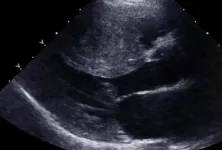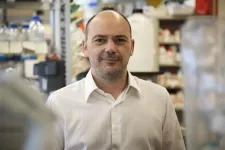(Press-News.org) SAN FRANCISCO—June 4, 2024—In recent years, technologies that allow scientists to study a person’s DNA at single-molecule resolution have vastly expanded our knowledge of the human genome, the microbiome, and the genetic basis of disease. With such a detailed view of DNA, it’s possible to see genetic variants and structural details that were simply undetectable with earlier sequencing technologies.
However, today’s gold-standard methods for single-molecule analysis typically require at least 150,000 human cells—containing millions of individual DNA molecules. That means researchers can’t apply these tools when just a few thousand cells are available, such as in many tumor biopsies, limiting the scientific and clinical potential of these technologies.
Now, researchers at Gladstone Institutes have developed two new tools for single-molecule analysis that slash the amount of DNA needed by 90 to 95 percent. Their work, published in the journal Nature Genetics, shows how these tools could allow scientists to address biological questions they were previously unable to answer.
“We’ve been working toward creating these methods for a very long time,” says Vijay Ramani, PhD, assistant investigator at Gladstone and senior author of the study. “We’re really excited to see what discoveries will now be possible.”
‘Tagging’ DNA for a Clearer View
The first of the new tools, known as “single-molecule real time sequencing by tagmentation,” or SMRT-Tag, extends the established protocols for simultaneously mapping the sequence of bases in a long DNA fragment and locations of chemical structures called methyl groups, which lie along the length of the DNA. Methyl groups play a key role in gene expression, making them essential for understanding disease, so it’s important to see how they’re configured on DNA.
“When we have very little DNA to work with, we can’t just make more copies of the DNA and apply our usual protocols,” Ramani says. “Making copies would strip away these methylation patterns and introduce other errors.”
Instead, his team adapted an approach called “tagmentation,” which repurposes the bacterial protein Tn5 to simultaneously cut DNA molecules into more manageable fragments and tag them with chemical components necessary for further analysis.
Tagmentation is already used for sequencing short fragments of DNA when only small amounts of DNA are available—but only limited information can be gleaned from short fragments.
The challenge for Ramani’s team was to get the biochemistry of tagmentation just right for breaking up small amounts of DNA into long chunks of about 3,000 to 5,000 base pairs. Their method “tags” the ends of each fragment with hairpin-shaped structures, creating long loops of DNA that can be read reliably by sequencer machinery.
“It was quite a heroic effort by the staff and students in my lab,” Ramani says. “We had to test different versions of Tn5 and nearly 100 different conditions with different buffers, enzymes, and temperatures. When you’re working with such small amounts of DNA, any issue that causes any DNA loss is that much more of a problem.”
Actionable Data from Small Samples
Once they optimized SMRT-Tag, the team demonstrated that it performs as well as established protocols but using far lower amounts of DNA—about the amount found in as few as 10,000 cells.
“Using gold-standard single-molecule sequencing machinery, no one has ever sequenced such a small amount of DNA to the coverage we’ve now achieved,” Ramani says.
Next, his team combined SMRT-Tag with a method they previously developed called SAMOSA, short for “single-molecule adenine methylated oligonucleosome sequencing assay.”
SAMOSA reveals additional methylation patterns that reflect chromatin accessibility—or, how easily gene expression machinery can access different stretches of DNA.
Now, with the new SAMOSA-Tag tool, the researchers were able to assess chromatin accessibility with much less DNA than previously needed. To demonstrate, they applied it to prostate cancer cells—some from a patient’s initial tumor and some from a tumor that had spread to a different location in the body—that had been transplanted and grown in mice. The method revealed differences in chromatin accessibility that hint at possible key drivers of cancer metastasis.
“This is just one example of how our tools could be applied to clinically relevant samples in cancer and other diseases where DNA is in short supply,” says Siva Kasinathan, MD, PhD, who co-led the study with Ramani. “We think there’s some low-hanging fruit there that could unlock some new biology, which could be important for helping patients down the line.”
Kasinathan, a clinical fellow at Lucille Packard Children’s Hospital at Stanford University, is a visiting scientist at Gladstone and a longtime collaborator with Ramani.
Ramani’s team is now optimizing SMRT-Tag and SAMOSA-Tag to work with even smaller amounts of DNA. They also continue to share and regularly update their protocols online, inviting feedback and collaboration from other researchers. “The community and people involved are really important in the story of this work,” Ramani says.
In particular, he highlights his work with Kasinathan, who he met while they were in graduate school together at University of Washington. Together, they conceptualized the study. “It’s been so meaningful to work with one of my closest friends to publish what we think will be very impactful work for human health.”
About the Study
The study, “Direct transposition of native DNA for sensitive multimodal single-molecule sequencing,” is available online and appears in the June 2024 print edition of Nature Genetics. Authors are Arjun Nanda, Ke Wu, Iryna Irkliyenko, Brian Woo, Megan Ostrowski, Andrew Clugston, Leanne Sayles, Lingru Xu, Ansuman Satpathy, Hao Nguyen, Alejandro Sweet-Cordero, Hani Goodarzi, Sivakanthan Kasinathan, and Vijay Ramani.
About Gladstone Institutes
Gladstone Institutes is an independent, nonprofit life science research organization that uses visionary science and technology to overcome disease. Established in 1979, it is located in the epicenter of biomedical and technological innovation, in the Mission Bay neighborhood of San Francisco. Gladstone has created a research model that disrupts how science is done, funds big ideas, and attracts the brightest minds.
END
Scientists push single-molecule DNA sequencing to the next level
Two new tools created at Gladstone Institutes allow scientists to study DNA at single-molecule resolution using fewer cells than previously required, with clear applications for cancer and many other diseases.
2024-06-04
ELSE PRESS RELEASES FROM THIS DATE:
New telehealth stroke certification available to health care professionals
2024-06-04
DALLAS, June 4, 2024 — Significant barriers prevent or slow treatment for many patients with stroke, including long travel times to stroke center hospitals and the lack of availability of stroke specialists who can evaluate the patient and determine if they are a candidate for treatment.[1] Telehealth stroke care, also known as telestroke, can expand access to rural areas and other communities that face barriers to stroke care.
A new American Heart Association certification for health care professionals is designed to help standardize training and increase skills and competencies for health care providers ...
Allen Institute for Cell Science launches first disease-specific cell line collections
2024-06-04
By Jake Siegel
Seattle, WASH.—June 4, 2024—The Allen Institute for Cell Science unveiled a set of tools to accelerate research into hypertrophic cardiomyopathy (HCM), the most common genetic heart condition in the world: six new cell line collections, each carrying a different mutation associated with HCM.
HCM is primarily caused by mutations that thicken heart muscle and, in rare cases, lead to heart failure and cardiac arrest. The new cell line collections will help scientists investigate ...
Towards next-gen functional materials: direct observation of electron transfer in solids
2024-06-04
Electron transfer (ET) is a process in which an electron is transferred from one atom or molecule to another. ET is fundamental to electrochemical reactions with applications in many fields. Nanoscale ET, which involves the transfer of electrons in the range of 1–100 nanometers in solids is fundamental to the design of multifunctional materials. However, this process is not yet clearly understood.
Nanotubes, nanomaterials with unique cylindrical nanostructures, offer a variety of ET properties that can be realized through electron and hole (vacant spaces left by electrons) injections into the nanotubes, making them a suitable candidate for studying nanoscale ET. Although ...
How stress knocks out your cognitive reserve
2024-06-04
While mentally stimulating activities and life experiences can improve cognition in memory clinic patients, stress undermines this beneficial relationship. This is according to a new study from Karolinska Institutet published in Alzheimer’s & Dementia: The Journal of the Alzheimer’s Association.
Researchers in the late 1980s found that some individuals who showed no apparent symptoms of dementia during their lifetime had brain changes consistent with an advanced stage of Alzheimer’s disease. It has since been postulated that so-called ...
New study confirms presence of benzene in natural gas and potential for undetectable indoor leaks
2024-06-04
OAKLAND, CA – New research finds that even people with an average sense of smell could be living with a natural gas leak and not know it. The peer-reviewed study, published in Environmental Research Letters, finds that small gas leaks can impact indoor air quality by introducing a number of hazardous air pollutants, including the carcinogen benzene, which researchers found in 97% of natural gas samples across North America.
“While these smaller leaks are not large enough to cause gas explosions, hard-to-smell leaks are common,” ...
Allergy or infection? Scientists discover what distinguishes these two immune system responses
2024-06-04
The production of antibodies, essential for protecting our body against infections, is very well regulated through the action of a specific subtype of immune system cells, follicular helper lymphocytes. Now, a team led by Luís Graça, group leader at the Instituto de MedicinaMolecular João Lobo Antunes (iMM) and Professor at the Faculty of Medicine of the University of Lisbon, has dedicated itself to the detailed characterization of the functioning of these cells, in an article published today in the prestigious ...
Study reveals high rate of drowsy driving by teens
2024-06-04
DARIEN, IL – A new study to be presented at the SLEEP 2024 annual meeting found that drowsy driving by teenagers is a common threat to public safety on U.S. roadways.
Results of the National Sleep Foundation study show that approximately one in six adolescent drivers reported having driven drowsy. Based on these responses, the authors project that 1.7 million teenage drivers have driven drowsy, and more than 400,000 teens drive drowsy at least once per week. The majority of teens pointed to work or ...
Hypoxemia due to sleep apnea is associated with risk of lung cancer reoccurrence
2024-06-04
DARIEN, IL – A new study to be presented at the SLEEP 2024 annual meeting is the first to find that episodic hypoxemia and hypoxic burden related to obstructive sleep apnea are associated with the risk of accelerated lung cancer reoccurrence.
Results show that a 4% oxygen desaturation index of more than 15 and time spent in desaturation events were risk factors for cancer reappearance in less than two years. Measures of hypoxic burden such as time spent below 89% oxygen saturation, average oxygen saturation value below 89%, and single nadir oxygen levels, showed a similar association. After adjustment for potential confounders, average oxygen saturation below 89% and single minimum ...
Getting more sleep leads to increased gratitude, resilience and flourishing
2024-06-04
DARIEN, IL – A new study to be presented at the SLEEP 2024 annual meeting found that healthy sleep has a positive impact on gratitude, resilience and flourishing in adults.
Results show that subjective sleepiness and mood disturbances improved with earlier bedtimes that extended sleep by an average of 46 minutes per night and worsened with later bedtimes that reduced nightly sleep by an average of 37 minutes. Measures of flourishing, resilience and gratitude significantly improved across the week with sleep extension and significantly worsened with sleep restriction. Sleep-extended ...
Smart thermostats provide sleep insights at home
2024-06-04
DARIEN, IL – A new study to be presented at the SLEEP 2024 annual meeting offers a framework for an objective, non-invasive and zero-effort sleep monitoring system utilizing smart thermostats equipped with motion sensors.
Results show that smart thermostats identified three distinct sleep quality clusters, with clear variations in sleep duration, disturbances and efficiency. Comparative analysis underscored the heterogeneity in sleep quality, highlighting the potential of smart devices and NextGen IoT data sources in identifying sleep patterns and contributing to sleep research ...
LAST 30 PRESS RELEASES:
Sleeping in on weekends may help boost teens’ mental health
Study: Teens use cellphones for an hour a day at school
After more than two years of war, Palestinian children are hungry, denied education and “like the living dead”
The untold story of life with Prader-Willi syndrome - according to the siblings who live it
How the parasite that ‘gave up sex’ found more hosts – and why its victory won’t last
When is it time to jump? The boiling frog problem of AI use in physics education
Twitter data reveals partisan divide in understanding why pollen season's getting worse
AI is quick but risky for updating old software
Revolutionizing biosecurity: new multi-omics framework to transform invasive species management
From ancient herb to modern medicine: new review unveils the multi-targeted healing potential of Borago officinalis
Building a global scientific community: Biological Diversity Journal announces dual recruitment of Editorial Board and Youth Editorial Board members
Microbes that break down antibiotics help protect ecosystems under drug pollution
Smart biochar that remembers pollutants offers a new way to clean water and recycle biomass
Rice genes matter more than domestication in shaping plant microbiomes
Ticking time bomb: Some farmers report as many as 70 tick encounters over a 6-month period
Turning garden and crop waste into plastics
Scientists discover ‘platypus galaxies’ in the early universe
Seeing thyroid cancer in a new light: when AI meets label-free imaging in the operating room
Neutrophil-to-lymphocyte ratio may aid risk stratification in depressive disorder
2026 Seismological Society of America Annual Meeting
AI-powered ECG analysis offers promising path for early detection of chronic obstructive pulmonary disease, says Mount Sinai researchers
GIMM uncovers flaws in lab-grown heart cells and paves the way for improved treatments
Cracking the evolutionary code of sleep
Medications could help the aging brain cope with surgery, memory impairment
Back pain linked to worse sleep years later in men over 65, according to study
CDC urges ‘shared decision-making’ on some childhood vaccines; many unclear about what that means
New research finds that an ‘equal treatment’ approach to economic opportunity advertising can backfire
Researchers create shape-shifting, self-navigating microparticles
Science army mobilizes to map US soil microbiome
Researchers develop new tools to turn grain crops into biosensors
[Press-News.org] Scientists push single-molecule DNA sequencing to the next levelTwo new tools created at Gladstone Institutes allow scientists to study DNA at single-molecule resolution using fewer cells than previously required, with clear applications for cancer and many other diseases.






